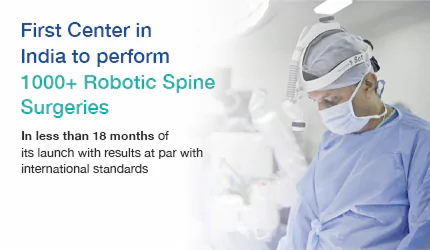When Neck Problems Become a Spinal Cord Emergency
Neck pain is common, but cervical myelopathy is different – and potentially serious. Unlike typical neck pain that affects muscles and joints, cervical myelopathy occurs when your spinal cord itself becomes compressed in your neck. This isn't just about discomfort; it's about preserving your ability to walk, use your hands, and maintain your independence.
If you've been experiencing symptoms like difficulty with fine hand movements (trouble buttoning shirts or writing), unsteady walking, or weakness in your arms and legs, and your doctor has mentioned "cervical myelopathy," understanding your condition and treatment options is crucial for your future quality of life.
Understanding Cervical Myelopathy: Why It's Serious
Your spinal cord is like the main electrical cable that carries signals between your brain and the rest of your body. In cervical myelopathy, this cable becomes squeezed in your neck, disrupting these vital signals. This compression can result from:
-
Age-related wear and tear (most common cause)
-
Herniated discs that press against the spinal cord
-
Bone spurs that develop over time
-
Thickened ligaments that narrow the spinal canal
-
Previous neck injuries that cause instability
What Makes This Condition Concerning
Unlike other spine problems that primarily cause pain, cervical myelopathy affects your neurological function.
Early symptoms may include:
-
Difficulty with fine hand coordination (handwriting, buttoning clothes)
-
Numbness or tingling in hands and arms
-
Unsteady walking or balance problems
-
Feeling of weakness in arms or legs
Progressive symptoms can include:
-
Dropping objects frequently
-
Difficulty walking up stairs
-
Problems with bladder or bowel control
-
Severe weakness in arms and legs
The critical point: Cervical myelopathy often worsens over time. Without treatment, the spinal cord damage can become permanent, leading to disability that cannot be reversed even with surgery.
Advanced Diagnosis at MIRSS
Diagnosing cervical myelopathy requires specialized evaluation to determine the extent of spinal cord compression and plan appropriate treatment:
-
High-resolution MRI scans to visualize spinal cord compression and signal changes
-
CT scans to assess bone structure and calcification
-
Neurological examination to evaluate the severity of spinal cord dysfunction
-
Electrodiagnostic studies when needed to assess nerve function
-
3D imaging reconstruction for precise surgical planning
This comprehensive evaluation helps determine not only the presence of myelopathy but also which surgical approach will provide the best outcome for your specific situation.
When Surgery Becomes Necessary
Conservative Treatment Limitations
Unlike herniated discs that may improve with time, cervical myelopathy involving spinal cord compression typically requires surgical intervention because:
-
The spinal cord cannot heal while under pressure
-
Symptoms often progress without treatment
-
Permanent damage can occur if compression continues
-
Non-surgical treatments cannot remove the physical compression
Indications for Surgery
Surgery is typically recommended when you have:
-
Confirmed spinal cord compression on MRI
-
Progressive neurological symptoms affecting hand function or walking
-
Moderate to severe myelopathy that impacts daily activities
-
Evidence of spinal cord signal changes indicating damage
The goal of surgery is to remove pressure from the spinal cord before permanent damage occurs.
Surgical Options: Choosing the Right Approach
The choice of surgical procedure depends on several factors:
-
Location of compression (front, back, or both)
-
Number of levels involved (single vs multiple)
-
Spinal stability (stable vs unstable)
-
Bone quality and overall health
-
Preservation of neck motion vs need for stability
Anterior Approaches (Front of Neck)
Anterior Cervical Corpectomy and Fusion (ACCF)When it's used: Severe compression from the front involving one or more vertebral bodies
What it involves:
-
Removal of damaged vertebral body(ies) and discs
-
Reconstruction with bone graft or cage
-
Stabilization with plate and screws
-
Best for multilevel compression from the front
Advantages: Direct removal of compression, excellent decompression Considerations: Eliminates motion at fused levels
Posterior Approaches (Back of Neck)
Laminectomy
When it's used: Compression mainly from the back, good spinal stability
What it involves:
-
Removal of lamina (roof of spinal canal) to create more space
-
Often combined with fusion if stability is a concern
-
May be done alone if spine remains stable
Advantages: Effective decompression from behind Considerations: May require fusion for stability
Laminoplasty
When it's used: Multilevel compression from behind, desire to preserve neck motion
What it involves:
-
"Hinge" opening of lamina to expand spinal canal
-
Bone remains attached, preserving more stability
-
Motion preservation compared to fusion
Advantages: Maintains more natural neck movement Considerations: Limited to specific anatomical situations
Posterior Instrumented Fusion
When it's used: Instability present, failed previous surgery, complex multilevel disease
What it involves:
-
Placement of screws and rods for stability
-
Bone grafting to achieve fusion
-
May be combined with laminectomy
Advantages: Excellent stability and decompression Considerations: Eliminates motion at fused levels
Advanced Surgical Technology at MIRSS
At MIRSS, we employ cutting-edge robotic technology to enhance surgical precision and patient safety across all cervical myelopathy procedures:
Robotic-Assisted Surgery
Our MazorX Stealth Edition (Medtronic) – a 3rd generation spine robot with integrated navigation capabilities – provides:
-
Precise preoperative planning based on your specific anatomy
-
Real-time surgical guidance during decompression and instrumentation
-
Enhanced accuracy in screw placement and bone removal
-
Reduced tissue trauma and improved outcomes
Intraoperative Imaging
High-resolution cone beam CT during surgery allows:
-
Real-time verification of adequate decompression
-
Immediate confirmation of hardware placement
-
Adjustment of surgical plan if needed during the procedure
Specialized Surgical Environment
Our state-of-the-art modular operating theaters feature:
-
Integrated robotic and imaging systems
-
Optimal positioning for complex cervical procedures
-
Advanced monitoring capabilities
The Surgical Process at MIRSS
Before Surgery
Your surgical team will:
-
Create a detailed surgical plan using robotic planning software
-
Review your specific anatomy and compression pattern
-
Discuss the chosen approach and expected outcomes with our dedicated spine anesthesia team
During Surgery
Procedure times vary by complexity (1-4 hours):
-
Anesthesia: Our specialized spine anesthesia team provides optimal care throughout your procedure.
-
Positioning: Careful positioning to optimize surgical access while protecting your spinal cord.
-
Robotic-Guided Decompression: Using real-time navigation, precise removal of compressive elements (bone, disc, ligament).
-
Reconstruction: When fusion is needed, robotic guidance ensures optimal placement of grafts and hardware.
-
Neuromonitoring: Intraoperative neuromonitoring continuously tracks spinal cord and nerve function throughout the procedure.
-
Verification: Final imaging to confirm adequate decompression and proper hardware position.
Our specialized OR staff trained in complex cervical procedures ensure optimal coordination throughout your surgery.
Recovery: What to Expect
In the Hospital
-
Most patients stay 1-2 days after surgery (depends on patient to patient)
-
Pain management with multimodal approaches
-
Early mobilization with physical therapy guidance
-
Neurological monitoring to assess improvement
The Recovery Timeline
First 2 Weeks:
-
Initial wound healing
-
Gradual increase in activity
-
May require cervical collar depending on procedure
-
Follow-up for wound check and early assessment
Weeks 2-6:
-
Progressive return to daily activities
-
Beginning of formal rehabilitation
-
Driving may be permitted (depending on procedure and symptoms)
-
Continued restrictions on heavy lifting
Months 2-6:
-
Neurological recovery continues (may take months)
-
Return to work for most patients
-
Fusion healing if fusion was performed
-
Progressive strengthening exercises
6+ Months:
-
Maximum neurological recovery typically achieved
-
Return to full activities as appropriate
-
Long-term follow-up to monitor results
Rehabilitation with MIRSS
Our dedicated spine physiotherapy team creates individualized recovery programs focusing on:
-
Neurological recovery optimization
-
Strength and coordination retraining
-
Functional activity restoration
-
Prevention of future problems
What Improvement to Expect
Realistic expectations:
-
Pain relief often occurs relatively quickly
-
Neurological recovery can take 6-12 months or longer
-
Hand function may improve but might not return to normal if damage was severe
-
Walking ability typically improves if surgery is performed before severe damage
-
Prevention of further deterioration is often the most important goal
Warning Signs to Watch For
Contact your doctor immediately if you experience:
-
Worsening weakness in arms or legs
-
New numbness or tingling
-
Difficulty walking or balance problems
-
Signs of infection (fever, wound issues)
-
Bladder or bowel control problems
Success Rates and Long-term Outcomes
Cervical myelopathy surgery has good success rates when performed appropriately:
-
Most patients experience stabilization or improvement of symptoms
-
Earlier surgery generally leads to better outcomes
-
Prevention of further deterioration is achieved in most cases
-
Some patients may experience continued gradual improvement for up to two years
Important considerations:
-
Complete recovery is not always possible if significant damage occurred before surgery
-
The primary goal is often to prevent further deterioration
-
Some functional limitations may persist
-
Long-term follow-up is important to monitor for adjacent level changes
Why Choose MIRSS for Your Spine Care?
Comprehensive Expertise
-
Experienced spine surgeons specializing in complex cervical myelopathy procedures
-
Multidisciplinary team including dedicated anesthesia and rehabilitation specialists
-
Specialized OR staff trained in advanced cervical spine surgery protocols
Advanced Technology
-
3rd generation robotic surgery with integrated navigation
-
Intraoperative high-resolution imaging for real-time surgical guidance
-
Comprehensive neuromonitoring for enhanced spinal cord protection
-
State-of-the-art modular operating theaters designed for complex spine procedures
Patient-Centered Care
-
Thorough evaluation to determine optimal surgical approach
-
Personalized surgical planning based on your specific pathology
-
Comprehensive rehabilitation programs
-
Long-term follow-up and support
Questions to Ask Your Doctor
Before making treatment decisions, consider asking:
-
How severe is my myelopathy, and how urgent is surgery?
-
Which surgical approach is best for my specific situation?
-
What can I realistically expect in terms of recovery?
-
What are the risks of waiting vs proceeding with surgery?
-
How will this affect my daily activities long-term?
Moving Forward
Cervical myelopathy is a serious condition that requires prompt, expert care. The goal of surgery is not just to relieve symptoms but to prevent permanent spinal cord damage that could affect your independence and quality of life.
Understanding your condition and treatment options helps you make informed decisions about your care. While the prospect of spinal cord surgery can be frightening, modern techniques offer excellent outcomes when performed by experienced teams using advanced technology.
The most important factor in your outcome is often timing – seeking appropriate care before irreversible damage occurs gives you the best chance for optimal recovery and long-term function.
At MIRSS (Manipal Institute of Robotic Spine Surgery), Bangalore, we combine the latest in robotic surgical technology with specialized expertise in complex cervical spine conditions. Our integrated approach – from comprehensive diagnostic evaluation to personalized rehabilitation – is designed to provide you with the best possible outcome and optimal preservation of neurological function. From your initial consultation through long-term follow-up, our dedicated teams in Bangalore work together to support you on your journey toward recovery and maintaining your independence.






